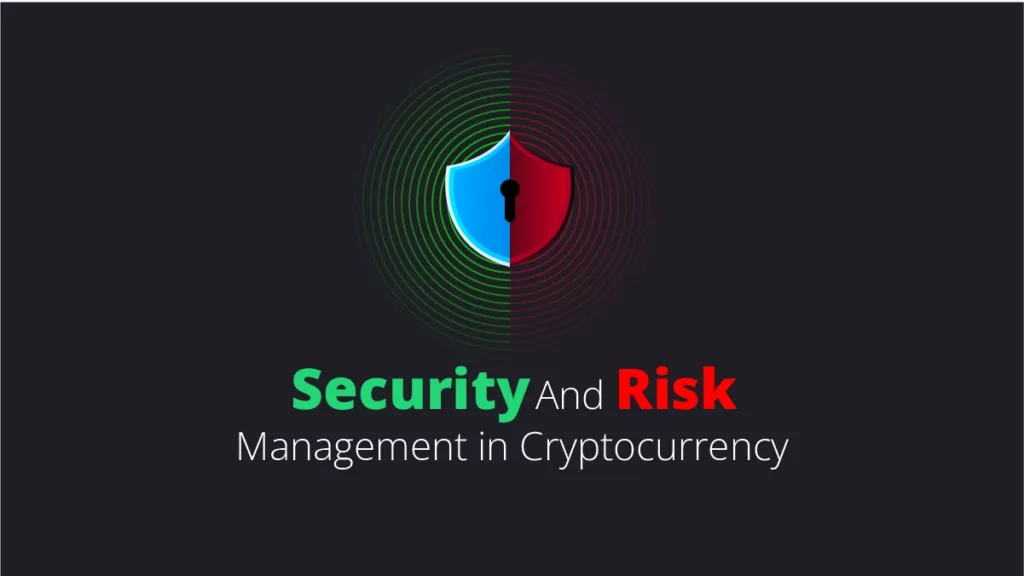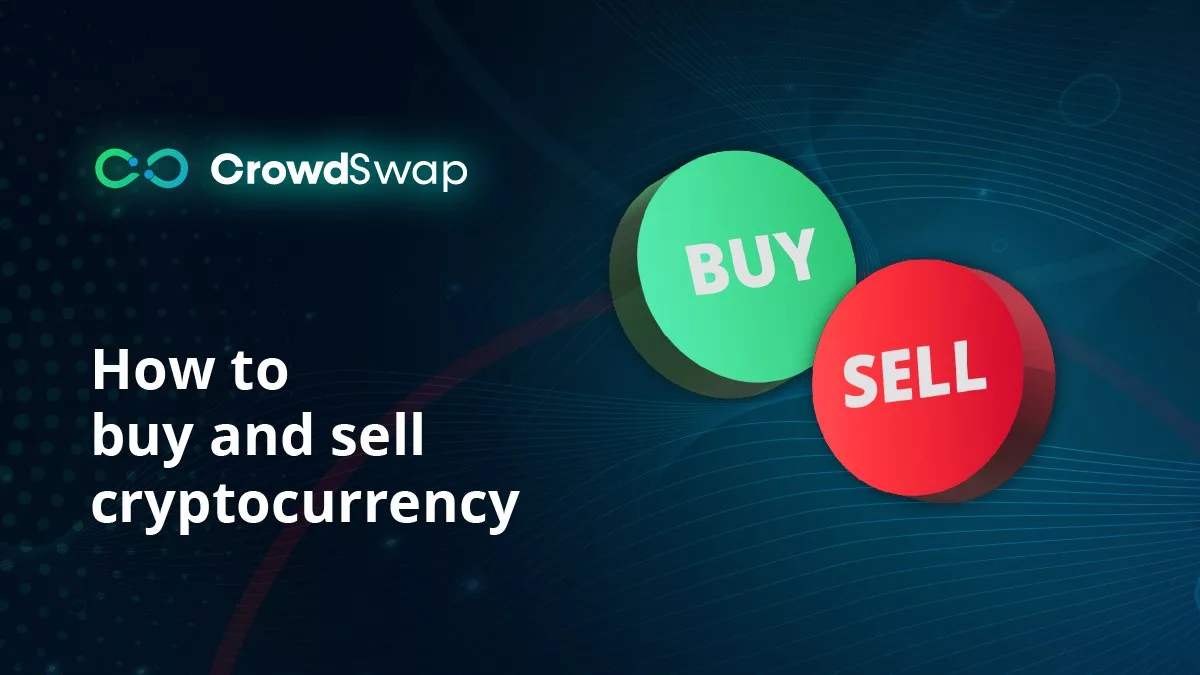Imagine stepping into a conversation that piques your curiosity—a buzz about a revolutionary currency that’s reshaping the world as we know it. Words like “blockchain” and “decentralized networks” fly around, and suddenly, you’re hooked. Just like John, an ambitious entrepreneur who found himself drawn into the crypto world, you’re eager to crack the code and dive into the thrilling yet complex realm of cryptocurrencies.
This comprehensive guide is your key to understanding the essentials of buying and selling cryptocurrency, equipping you with the knowledge to navigate this exciting financial frontier with confidence. Ready to start? Let’s dive in!
Crypto Basics
Let’s dive into some essential concepts and preparations you’ll need before you start buying and selling digital assets. This section will guide you through the key elements that will set you up for success in the crypto world.
What is Cryptocurrency?
Cryptocurrency is a type of money that exists only online. It doesn’t rely on banks or governments to operate. Instead, it uses special technology to keep transactions safe and secure. You can think of it as digital cash that you can send directly to others over the internet, with added protection to prevent fraud.
Read More: A Deep Dive Into Bitcoin And Cryptocurrency
How Does Cryptocurrency Work?
Cryptocurrency works through a system called blockchain, which is like a public digital record book shared across many computers worldwide. Each transaction is added to this record as a “block” and linked to the previous ones, creating a “chain” of transactions. This setup makes sure everything is transparent and secure because the entire network checks and approves each transaction. Special math, called cryptography, keeps your money safe and ensures only the owner can access it.
Learn More: What is Blockchain?
Types of Cryptocurrencies
The crypto world offers a variety of digital assets, each serving different purposes:
Bitcoin (BTC): The first and most well-known cryptocurrency, often considered digital gold.
Ethereum (ETH): A platform for decentralized applications and smart contracts, offering more than just currency.
Stablecoins: Stablecoins are types of cryptocurrencies that are linked to real-world assets, like traditional money, to keep their value steady. For example, Tether (USDT) and USD Coin (USDC) are stablecoins that are pegged to the US dollar.
Utility Tokens: Tokens that provide access to specific services or products within a blockchain ecosystem. For instance, Binance Coin (BNB) is a utility token that can be used to pay fees on the Binance exchange, and Filecoin (FIL) allows users to buy storage space on the Filecoin network.

Laying the Foundation: Essential Steps for Buying and Selling Cryptocurrency
As John explored the world of cryptocurrencies, he quickly realized that preparation is key to success. Like John, you’ll need to lay a solid foundation before diving into the exciting realm of buying and selling cryptocurrency.
Research and Select the Right Cryptocurrency
Before investing, thoroughly research different cryptocurrencies. Look beyond the hype and consider the technology, real-world applications, and the team behind each project. This will help you make informed decisions that align with your goals.
Set Up a Secure Digital Wallet
A digital wallet is like your crypto piggy bank—it’s where you store and manage your digital assets. Choosing the right wallet is crucial for keeping your investments secure. You have several options:
Hardware Wallets: Physical devices (like a USB drive) like Ledger Nano S or Trezor that store your crypto offline, providing top-notch security.
Software Wallets: Apps like Exodus or Electrum that you install on your computer or phone offering a balance of convenience and security.
Online Wallets: Web-based wallets like MetaMask or Coinbase Wallet that are accessible from anywhere, though they require extra caution regarding security.
Prioritize security by selecting a wallet with strong encryption and two-factor authentication to ensure your assets are protected.
Learn More: How to set up a cryptocurrency wallet?
Familiarize with Cryptocurrency Exchanges
Cryptocurrency exchanges are platforms where you can buy, sell, and trade cryptocurrencies. Just like John, explore different exchanges, considering factors like security, fees, and the range of cryptocurrencies offered. Whether you prefer a centralized or decentralized exchange (like CrowdSwap), choose one that fits your needs.
Read More: What is CEX or Centralized Exchange?
Read More: What is DEX or Decentralized Exchange?
By taking these essential steps, you’ll be well-prepared to begin your cryptocurrency journey. In the next part of our guide, we’ll dive into the process of actually buying and selling cryptocurrency so you can confidently navigate this exciting market.
A Simple Guide to Buying and Selling Cryptocurrency
Now that you’ve learned the basics, it’s time to put them into action and start your crypto journey, just like John did. Here’s a step-by-step guide to help you get started. To learn more, read this blog post: “How to Invest in Cryptocurrency?”
Buying Cryptocurrency
Registering and Verifying Your Account
To begin, you’ll need to sign up on a cryptocurrency exchange. This process is similar to creating a social media account but with an added step of identity verification for security purposes. On centralized exchanges (CEXs), you’ll need to provide some personal information. Decentralized exchanges (DEXs), however, usually require only your wallet address.
Funding Your Account
Once your account is verified, you need to fund it. On centralized exchanges, you can link your bank account or credit card to deposit money, which you’ll then use to buy cryptocurrencies. Decentralized exchanges work differently. Instead of depositing funds into the platform, you maintain control by using your own digital wallet. You can transfer cryptocurrency directly from your wallet to the DEX for trading. Some DEXs also offer Fiat-on-Ramp features, like CrowdSwap, allowing you to buy crypto using traditional currency.
Placing a Buy Order
With funds in your account, you’re ready to buy cryptocurrency. On centralized exchanges, you can place different types of orders based on your trading strategy. On decentralized exchanges, you’ll typically use “Swap” or “Trade” options. Here, you trade directly with other users through smart contracts on the blockchain. Review the transaction details carefully before confirming your purchase.
Executing the Purchase
After placing your order, the next step is to execute it. On centralized exchanges, once the transaction is confirmed, your purchased cryptocurrency will appear in your exchange account. However, it’s safer to transfer your crypto to a secure digital wallet. On decentralized exchanges, the cryptocurrency is immediately transferred to your wallet after the transaction, giving you full control and security over your funds.
Selling Cryptocurrency
Selling cryptocurrency is just as straightforward as buying it. Monitor the market to decide the best time to sell, and follow these steps:
Placing a Sell Order
On centralized exchanges, navigate to the sell section, choose the cryptocurrency you want to sell, and specify the amount or price. You can use different order types, like market or limit orders. On decentralized exchanges, connect your wallet, select the cryptocurrency you wish to sell, and initiate the trade.
Executing the Sale
Once your sell order is placed, monitor the transaction until it’s confirmed. On centralized exchanges, the funds will appear in your account balance, while on decentralized exchanges, the proceeds from the sale will be transferred directly to your wallet, maintaining your control over the funds.

Security and Risk Management in Cryptocurrency
Prioritizing Security
Securing your digital assets is crucial. Start by choosing wallets with strong security features, like hardware wallets that store your cryptocurrencies offline. Utilize multi-factor authentication and ensure your wallet is encrypted. These steps reduce the risk of unauthorized access and protect your investments from potential theft.
Learn More: How to improve your DeFi wallet security?
Protecting Against Threats
Stay vigilant against threats such as phishing attempts. Always verify website URLs, look for secure HTTPS connections, and avoid sharing sensitive information online. Regularly update your devices and software to protect against vulnerabilities.
Implementing Risk Management Strategies
Effective risk management is key to successful crypto investing. Diversify your portfolio across different cryptocurrencies to spread risk. Set clear investment goals, establish a budget you’re comfortable with, and avoid overextending yourself. Maintain a long-term perspective to weather market volatility.
Staying Informed and Adapting
The cryptocurrency market is constantly evolving. Stay updated by following reliable news sources, engaging with crypto communities, and monitoring market trends. Adapt your strategies to align with new developments and opportunities in the market.
Benefits of Investing in Cryptocurrency
High Potential Returns
Cryptocurrencies have shown the potential for significant returns on investment, with some experiencing rapid price increases. Early investors in major coins like Bitcoin and Ethereum have seen substantial gains, making the crypto market an attractive option for those willing to embrace some risk.
Read More: How Does Cryptocurrency Gain Value?
Financial Independence and Control
Cryptocurrencies operate on decentralized networks, meaning they aren’t controlled by any single entity like a bank or government. This provides you with greater control over your assets and enables borderless transactions, making it easier to transfer funds globally without traditional banking restrictions.
Diversification of Portfolio
Adding cryptocurrencies to your investment portfolio can provide diversification, as they often behave independently of traditional markets like stocks and bonds. This can help balance risk and potentially enhance your overall investment returns, particularly during times of economic uncertainty.
Hedge Against Inflation
Some investors view cryptocurrencies as a hedge against inflation. Unlike traditional currencies, which can lose value due to inflationary pressures, many cryptocurrencies have a fixed supply. For example, Bitcoin’s limited supply makes it an appealing store of value, similar to gold, especially in times of economic instability.
Accessibility and Inclusion
Cryptocurrencies offer financial services to individuals who might not have access to traditional banking systems. With just a smartphone and internet connection, anyone can participate in the global financial system, making cryptocurrencies a powerful tool for financial inclusion.
Tracking and Optimizing Your Investments
John soon realized that tracking his cryptocurrency investments was crucial to staying ahead in the game of buying and selling cryptocurrency. By using portfolio tracking tools and apps, you can monitor your assets in real time, review historical price trends, and assess performance. This consistent monitoring enables you to spot opportunities, manage risks, and adjust your strategy as needed.
Investment strategies in crypto aren’t static. John found that regular reviews and optimizations were key to success. Diversify your portfolio, stay informed on new projects and trends, and continually fine-tune your approach for long-term growth.
In the rapidly changing world of cryptocurrency, continuous learning is essential. Like John, immerse yourself in the crypto community, engage with discussions, and learn from experienced investors. Stay curious, adaptable, and keep updating your strategies to progress in this dynamic market.
Master Crypto with Confidence
CrowdSwap's decentralized exchange offers all the DeFi tools you need, with top-notch support at your fingertips
Wrap-Up
As we wrap up this guide on buying and selling cryptocurrency, let’s reflect on John’s journey from curiosity to confidence in the crypto world. His story shows that with determination and the right knowledge, anyone can successfully navigate this dynamic market.
By following John’s example—understanding the basics, securing your assets, managing risks, and staying informed—you’re now prepared to start your own crypto journey. Remember, the world of cryptocurrencies is constantly evolving. Keep learning, stay vigilant, and embrace the opportunities ahead.
Happy investing!
FAQ
How much money do I need to start investing in cryptocurrency?
You can start investing in cryptocurrency with just a few dollars. Many exchanges have minimum trade requirements as low as $5 or $10, making it accessible for beginners.
What is the safest way to store my cryptocurrency?
The safest way to store your cryptocurrency is by using a hardware wallet, which stores your assets offline, reducing the risk of hacking.
How do I choose the right cryptocurrency to invest in?
Research the project’s technology, team, and real-world use cases. Diversifying your investments across multiple cryptocurrencies can also help to manage the risk.
Are cryptocurrencies a good long-term investment?
Cryptocurrencies can be a good long-term investment, but they are also highly volatile. It’s important to stay informed, diversify, and only invest what you can afford to lose.













